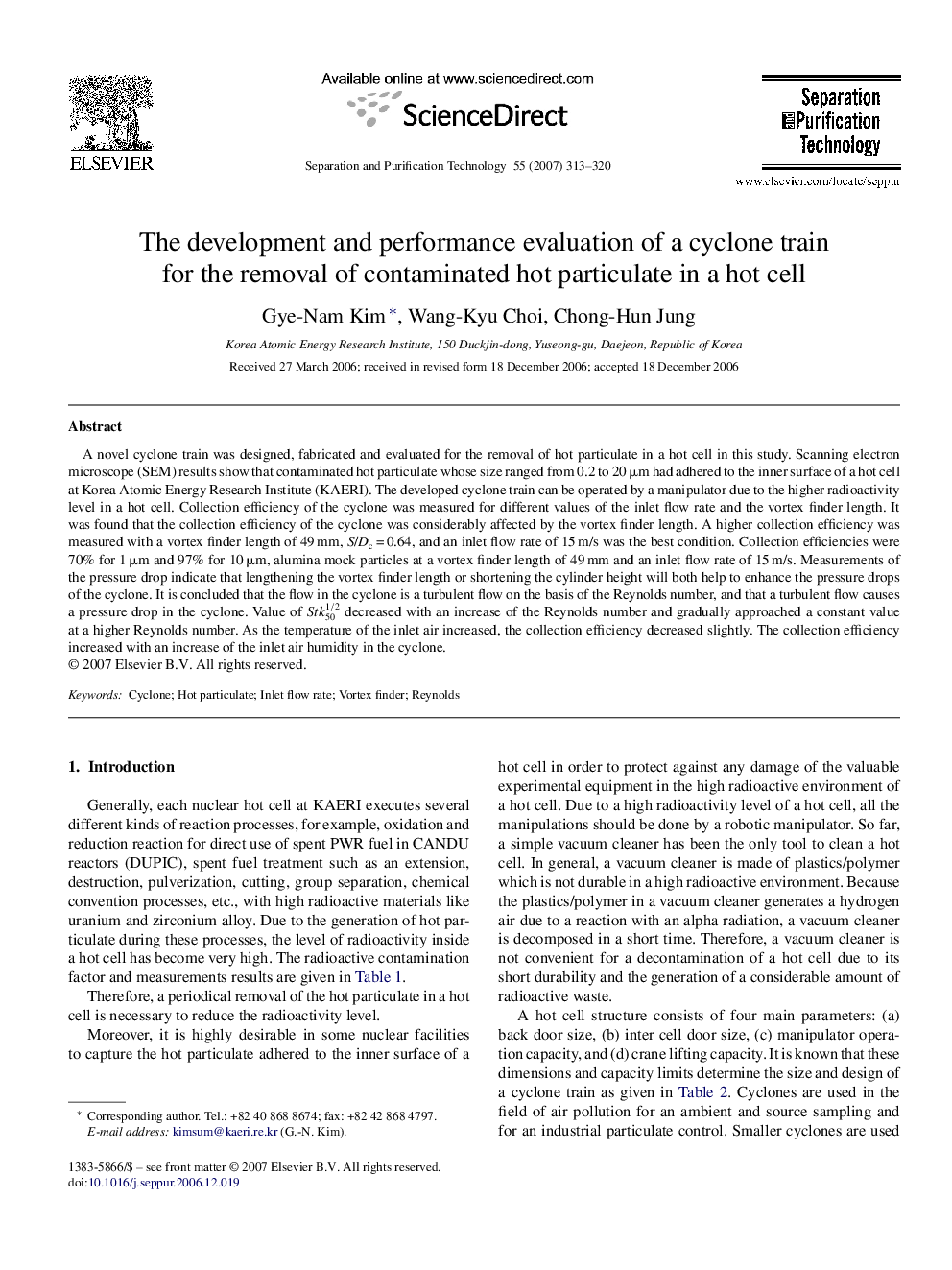| Article ID | Journal | Published Year | Pages | File Type |
|---|---|---|---|---|
| 644192 | Separation and Purification Technology | 2007 | 8 Pages |
Abstract
A novel cyclone train was designed, fabricated and evaluated for the removal of hot particulate in a hot cell in this study. Scanning electron microscope (SEM) results show that contaminated hot particulate whose size ranged from 0.2 to 20 μm had adhered to the inner surface of a hot cell at Korea Atomic Energy Research Institute (KAERI). The developed cyclone train can be operated by a manipulator due to the higher radioactivity level in a hot cell. Collection efficiency of the cyclone was measured for different values of the inlet flow rate and the vortex finder length. It was found that the collection efficiency of the cyclone was considerably affected by the vortex finder length. A higher collection efficiency was measured with a vortex finder length of 49 mm, S/Dc = 0.64, and an inlet flow rate of 15 m/s was the best condition. Collection efficiencies were 70% for 1 μm and 97% for 10 μm, alumina mock particles at a vortex finder length of 49 mm and an inlet flow rate of 15 m/s. Measurements of the pressure drop indicate that lengthening the vortex finder length or shortening the cylinder height will both help to enhance the pressure drops of the cyclone. It is concluded that the flow in the cyclone is a turbulent flow on the basis of the Reynolds number, and that a turbulent flow causes a pressure drop in the cyclone. Value of Stk501/2 decreased with an increase of the Reynolds number and gradually approached a constant value at a higher Reynolds number. As the temperature of the inlet air increased, the collection efficiency decreased slightly. The collection efficiency increased with an increase of the inlet air humidity in the cyclone.
Keywords
Related Topics
Physical Sciences and Engineering
Chemical Engineering
Filtration and Separation
Authors
Gye-Nam Kim, Wang-Kyu Choi, Chong-Hun Jung,
